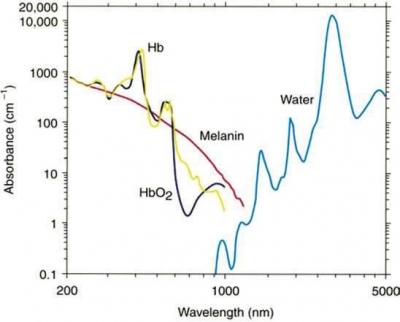Medical beauty has become a hot topic in recent years, with online forums discussing various types of treatments. During these discussions, many numbers are mentioned, such as 595, 755, 1064, 1550, and so on, which can be confusing to those who are unfamiliar with the topic. However, these numbers are not codes, but rather specific wavelengths of lasers used in medical beauty treatments.
If you have a basic understanding of physics, you know that lasers have specific wavelengths, measured in nanometers (nm). Different tissues and chromophores in the skin have unique properties for selectively absorbing a certain energy wavelength. When the laser energy with an appropriate wavelength is targeted to the skin, it can destroy the targeted chromophore selectively. Because of this unique interaction between lasers and chromophores, we can use lasers to treat various skin conditions. For example, to destroy melanin, we know that melanin absorbs light at 755nm, so we use a laser with that specific wavelength to target and break up melanin.
Here are other common wavelengths and the skin conditions they can treat:
- 585-595nm: vascular tissue (such as port wine stains, spider veins)
- 755nm: superficial pigmented lesions, hair follicles (such as freckles, hair removal)
- 1064nm: deep pigmented lesions, hair follicles (such as hair removal, melasma)
- 1550nm: subsurface tissue (such as pores, scars)
- 1927nm: epidermal tissue (such as superficial pigmentation, fine lines)
- 10600nm: epidermal proliferative tissue (such as warts, moles)
Aside from the wavelength selection, the choice of laser device is also crucial. New laser devices have undergone years of improvement and are now safer and more comfortable. For example, there is dynamic cooling technology (DCD™) available for hair removal that is more comfortable and safer than ice packs alone. Laser devices produced by reputable manufacturers are also more reliable and effective. So, don’t just focus on the numbers when considering medical beauty treatments in the future!

